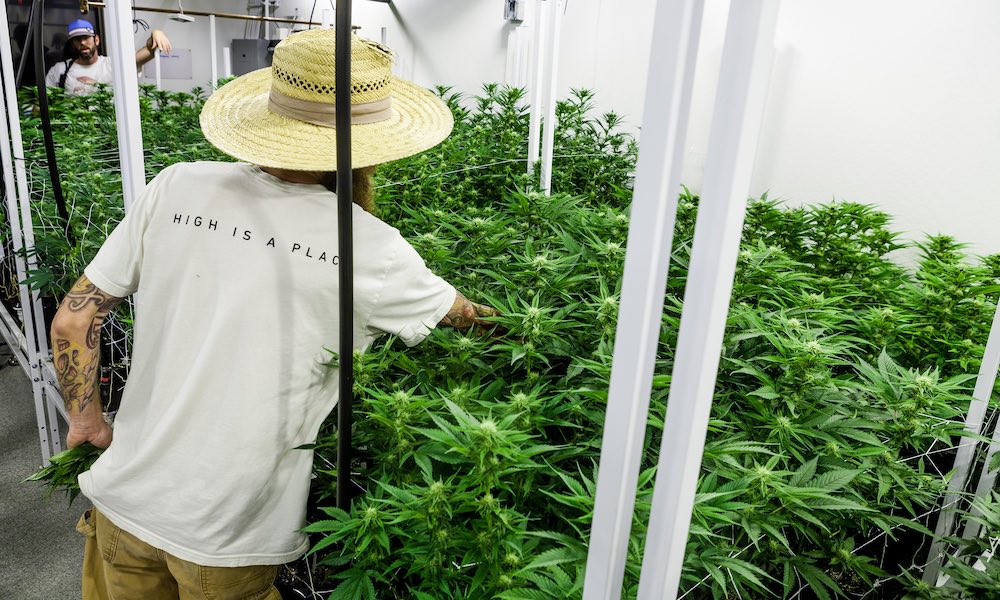
Legal
The Pot Panopticon: Tracking & Tracing CA Cannabis Is a Mess
Figuring out how to figure out where every scrap of product in a multi-billion-dollar market is proving difficult.
In order to sell them on the idea that cannabis is okay to have and sell in stores without invoking the police state, backers of California’s 2016 legalization initiatives promised the state’s conservatives and die-hard drug-warriors all kinds of things.
One of them was omnipotence — that all the cannabis all over the state could all be accounted for at any one time. And what do you know? Just like vows to quash the illicit market and “right the wrongs of the drug war,” this deal isn’t quite working out.
As the Associated Press reported, the percentage of growers, sellers, and manufacturers using the state mandated tracking system — the one state taxpayers are giving $60 million to a private company to run — is in the single digits.
A panopticon for pot, the state’s “track and trace system” is intended to follow the life of a cannabinoid “from seed to sale.” Plants are assigned barcodes at birth, with up to 100 plants entered into a “lot.” Barcodes are also slapped on products like oil cartridges and edible and entered into units of measurement called “packages.” Lots and packages alike are then scanned on their way from the farm, to the extraction lab, to the testing lab and to the dispensary.
Such control would ensure everybody paid their taxes to the full, that no illicit marijuana ended up at dispensaries, and that no cannabis grown under the cover of legitimacy would —oops! — be shipped out of state or fall into the hands of someone who shouldn’t have marijuana, like a child.
Dominion like this over such an enormous and variegated industry is no small feat. Agriculture is messy; can you imagine trying to follow the life of an almond? And so California state regulators gave cultivators, sellers, and transporters until Jan. 1, 2019, one year into the era of commercial sales, to get familiar with the state-mandated software program, called Metrc, and comply with track-and-trace requirements.
But there were exceptions. Only holders of “permanent” licenses from the Bureau of Cannabis Control or state Department of Food and Agriculture had to comply; a business with a “temporary” license did not. The first permanent licenses were only issued in November; many more temporary-license holders are still waiting for their applications to be processed.
This means that a permanent license-holder doing business with a temporary license holder had to input both parties’ activities into the Metrc system. A “vertically integrated” company with temporary and permanent licenses for different stages of the business — transportation versus manufacturing, say — isn’t required to use track-and-trace for product that passes from one stage to the other with different licensing at each stage.
That’s a pain, but as Marijuana Business Daily reported in March, there was also misinformation and limitations fueling “widespread confusion.” Some companies complained that the “unique identifier” stickers were too big for small products like vape cartridges. Others were flummoxed by arbitrary limits such as a ceiling of 500 “unique identifier” stickers per order. Someone started selling fake identifier stickers.
And if a company couldn’t quite figure out how Metrc worked, well, OK — they could use good old-fashioned paper instead.
That all sounds like a recipe for a mess, or for companies to justifiably say “f*ck it.” And as per the AP, that’s happening. Only nine out of the state’s 627 retail dispensaries, 93 out of 1,000 licensed manufacturing companies, and 254 out of the state’s 4,000 licensed growers are using track-and-trace.
In the meantime, everyone else is using a paper-trail “honor system,” as the AP described it.
State regulators don’t seem fussed. As the AP reported, the state has received 50,000 paper shipping manifests, and has yet to open any enforcement cases over fudged or fake records.
Meanwhile, fake product is being sold in unlicensed stories, and illicit cannabis continues to be grown on unlicensed farms and shipped out of state.
So what’s the harm, other than under-delivering on a massive over-promise? There is the chance that taxes are going underpaid. There is the possibility that bunk product is getting out there, though the obvious choke point for that would be the retailer, who could deny shelf space to product without an identifier. Or maybe the consumer could be encouraged to tell the state what they bought and where and then the state could determine if the retailer was being honest. But with unlicensed cannabis dispensaries proliferating in big markets like Southern California with (thus far) something close to impunity, perfecting the pot panopticon is likely very low on regulators’ list of priorities and, until something bad happens, even lower priority among consumers.
TELL US, do you know where your cannabis comes from?

























